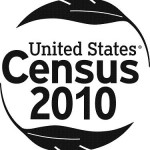The recent U.S. census not only gives us a snapshot of the U.S. population,  it can also serve as a free market research tool for marketers, roughly defining the American consumer while also illustrating important demographic shifts. The 2010 census shows some important trends in the American landscape including the continued growth of the Hispanic segment and a sizable increase in multi-generational households.
it can also serve as a free market research tool for marketers, roughly defining the American consumer while also illustrating important demographic shifts. The 2010 census shows some important trends in the American landscape including the continued growth of the Hispanic segment and a sizable increase in multi-generational households.
The census is designed to count the number of people for the purposes of reapportionment and it also functions as the basis for allocating upwards of $400 billion in federal funds. It’s is mandated by congress and has been conducted every ten years since the first one was conducted by then Secretary of State, Thomas Jefferson in 1790. It asks some pretty basic questions such as how many people are living in a residence, is that residence owned or rented, and the age, gender, and ethnicity of all residents.
So what can we learn from the 2010 census as marketers? What are the important trends that have emerged in terms of defining the American consumer?
Trend #1: The Growth in the Hispanic Population
Perhaps the most important trend coming out of the 2010 census is the continued growth in the Hispanic population from 35 million in 2000 to around 50 million, making up 13% of the U.S. population, but it’s more than just numbers. Hispanics have branched out geographically as well, expanding out of traditional metropolitan areas like New York, Miami, and L.A. into states like Texas, Georgia, and North Carolina, which saw the largest increase in Hispanic population. Other ethnic groups have grown too, especially Asian-Americans, but not as significantly, and growth in the African-American population is far more modest. The non-Hispanic white population is growing more slowly than other groups in some places, and is actually declining in other areas because it’s an older population.
Trend #2: Changes in living conditions:
Needless to the say the “Great Recession” has had a significant impact on living conditions. There are indications that the share of Americans living in households with at least two adult generations has risen since 2000, as many millennials are moving in with their parents to save money due to the soft job market and increasing student loan debt. Another factor in the growth in multi-generational living arrangements is the growing number of immigrants moving to the U.S. who are used to living in extended family households. Another trend that has taken root is the overall decline of the traditional two-parent family with children at home.
So, what does all this mean in terms of consumer trends?
There’s certainly been a lot of talk lately about the ‘new American consumer’ lately, especially in terms of spending and saving, which is difficult to define based on census data, but other demographic trends are raising questions and providing some important insights for marketers. The first trend that is apparent in the initial data is that many of the new, young families in America are of other race or ethnic groups (meaning non-white). As baby boomers start turning 65, another question that is of great importance to marketers is, will the new elderly population behave differently than the current elderly population? Pew surveys have already shown some clear differences between baby boomers and the older generations. They have different views on a variety of issues, and seem to be more accepting of the social changes that we’re experiencing as a country, and they are more technically savvy as well. The importance of the latter can’t be overstated when considering purchasing behavior.
One other trend that has emerged is the movement of people back-to-the-city. For the past 30-40 years the trend was that families were consistently moving from cities to the suburbs, but with gas prices at an all time high and new evolutions in the way cities are planned such as increased green space and a new focus on cultural offerings, more people are moving back to American cities. For marketers this is essential information to determine overall planning and whether you need regional or demographic approaches.
How should marketers put this data to use?
Census data should be just one data point among many others. It provides an important framework that will then need to be further substantiated by your own market research and other data points. For example, the census can help businesses evaluate locations for a new retail facility, restaurant, or supermarket based on who is living within a certain radius, but it doesn’t provide any data about the purchasing behavior of that population. Businesses will need to meld different forms of data to draw some firm conclusions about major marketing decisions.
How is your business planning to use the census data?
Additional resources: